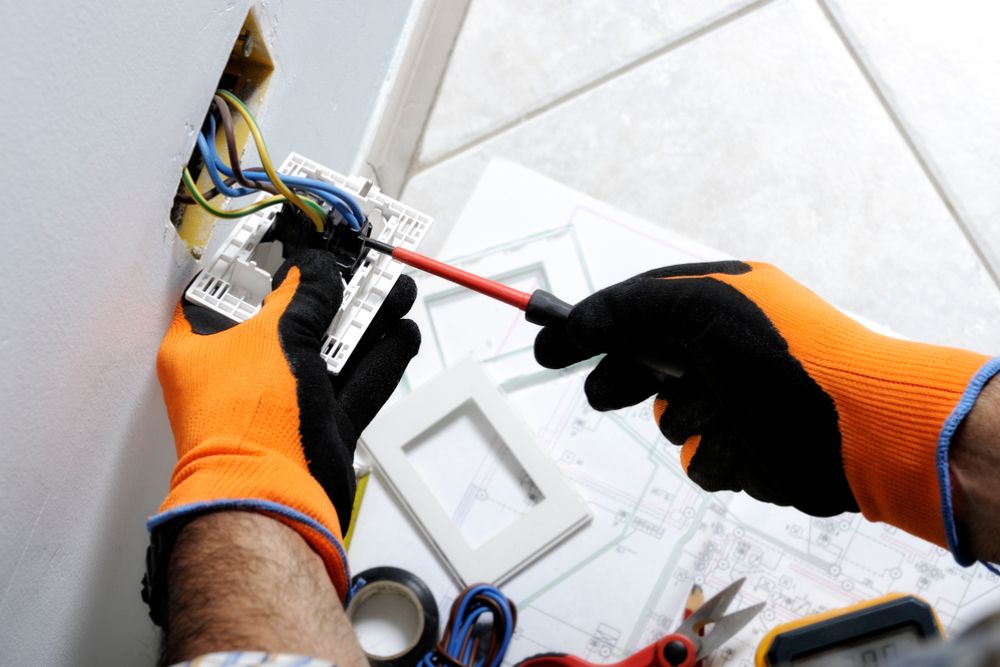Homeownership or renting a house often comes with a steady stream of maintenance tasks—from dripping faucets to complex electrical updates. While do-it-yourself (DIY) projects can be empowering, fun, and budget-friendly, not every task is best tackled with a YouTube tutorial and elbow grease. Sometimes, hiring a professional ensures safety, code compliance, and a polished result. So how do you discern which jobs you can handle and which demand an expert’s touch? This guide explores essential criteria—like complexity, safety risks, and your own skill level—to help you confidently decide which repairs or improvements to do on your own and which to leave to the pros.
1. Understanding the Upsides (and Downsides) of DIY
Why It Matters
DIY culture is thriving, fueled by online tutorials, big-box home improvement stores, and the satisfaction of making something (or repairing it) yourself. Yet, a realistic self-assessment is key. Overreaching with an advanced project can lead to frustration, subpar quality, or safety hazards.
Advantages of DIY
- Cost Savings: Avoiding labor fees often slashes project expenses, leaving more for materials or upgrades.
- Pride and Learning: Tackle a challenge, expand your skillset, and develop confidence to handle future issues.
- Flexibility: You control the timeline and small design tweaks—no waiting for a contractor’s schedule.
Risks or Drawbacks
- Time Investment: Even simpler tasks can balloon in hours if you’re learning as you go.
- Quality Variance: If you lack experience, you may get suboptimal results—especially with tasks requiring specialized tools or craftsmanship.
- Hidden Costs: Mistakes can be costly to fix, and big mishaps might require a pro anyway.
- Safety Hazards: Projects involving electricity, gas lines, or structural elements can pose serious risks if done incorrectly.
Takeaway
DIY can be liberating—just ensure you weigh the potential pitfalls before diving in. If you misjudge, you might spend more in the end or compromise your home’s structural or safety integrity.
2. The Pro Advantage: When Expertise Is Crucial
Why It Matters
While many tasks are ripe for a self-taught approach, certain categories—like major electrical rewiring or structural changes—are best left to licensed professionals. Deciding to pay for a pro is partly about safety but also about ensuring long-term reliability.
Situations Favoring Professionals
- Compliance with Building Codes: Electrical installations, major plumbing changes, and structural work often require permits and code adherence. A pro knows the codes and ensures correct paperwork.
- Specialized Tools: Some tasks (like cutting tile with a wet saw, or leveling a large concrete slab) demand specialized equipment and experience.
- Risk of Large Damage: A minor plumbing slip can flood your basement; an incorrectly installed roof patch can lead to major leaks and rot. For such high-stakes tasks, peace of mind from an expert is worthwhile.
- Time Constraints: If your day job or family commitments leave minimal free time, paying a pro might be cheaper in the big picture than dragging out an incomplete project for months.
Takeaway
If a project involves advanced skills or potential for serious damage, or it must meet legal/building code requirements, hiring pros can spare you major headaches and future expense.
3. Assessing Your Skills and Confidence
Why It Matters
Self-awareness about your experience level, tool familiarity, and comfort with reading instructions or watching how-to videos is crucial. Some novices can handle basic tasks—like painting, minor drywall repairs, or installing a new faucet—while advanced tasks require mechanical aptitude and caution.
Self-Evaluation
- Past DIY Projects: If you’ve successfully installed a ceiling fan or replaced a toilet, you likely have some mechanical skill.
- Tool Literacy: If you can’t name or don’t own common tools (e.g., power drill, stud finder, multimeter), advanced tasks can be risky.
- Learning Style: Are you patient with step-by-step tutorials, willing to double-check each stage? Impulsivity can lead to botched work.
- Safety Mindset: Will you consistently observe best practices, shut off circuit breakers, or wear protective gear?
Takeaway
Align tasks with your comfort zone. If you relish challenges and have a track record of successful smaller projects, bigger DIY might be feasible. Otherwise, stick to simpler tasks until your confidence and toolkit expand.

4. Matching Project Complexity with Approach
Why It Matters
No single rule states “always do X yourself, always hire a pro for Y.” Instead, consider how complex each project is—both in skill demands and potential impacts if something goes awry.
Examples
- Simple Repairs
- Dripping faucets, replacing shower heads, patching small drywall holes, or painting rooms.
- DIY: Minimal risk, usually straightforward instructions, moderate skill needed.
- Moderate Upgrades
- Installing a new dishwasher, replacing a light fixture, adding a new sink faucet.
- Decision Factor: If you can handle basic plumbing or electrical with caution, possible as a DIY. If uncertain, call a pro.
- Major Renovations
- Knocking down walls, rewiring breaker panels, re-roofing, or bathroom overhauls.
- Pro: Typically involve structural or code concerns. The margin for error is smaller, and mistakes can be costly or dangerous.
Takeaway
Define the scope carefully. If you sense the learning curve or potential damage is too great, it’s likely better to call in experts.
5. Budgeting and Time Constraints
Why It Matters
While a main incentive for DIY is to save money, the equation can shift if you factor in your labor time or risk of botched attempts. Meanwhile, a pro often finishes faster—crucial if you need to get the job done by a certain date.
Weighing Costs
- Materials: For DIY, you usually only pay for materials and basic tool purchases. A pro’s quote includes labor overhead plus potential markups on materials.
- Hidden Expenses: Tools you must buy or rent for a one-off job can add up. If you’ll reuse them, it might be worthwhile.
- Opportunity Cost: The time spent on a tricky project could be used to earn money or enjoy personal pursuits.
- Quality Guarantee: Some pros offer warranties. If you do it yourself and fail, you might pay doubly—once for your materials, again for a pro to fix it.
Takeaway
Decide if time or money is more precious to you right now. Also consider potential rework—some tasks are worth paying a pro once, rather than risking two or three attempts at doing it yourself.
6. Safety and Liability Considerations
Why It Matters
Some tasks, particularly those involving electricity, gas lines, roofing (risk of falls), or structural load changes, can pose significant safety hazards. If you’re not 100% sure how to handle these safely, calling a licensed professional might be non-negotiable.
Common High-Risk Tasks
- Electrical: Replacing outlets or switches might be manageable, but rewiring breaker panels or installing new circuits can be complex and dangerous if done incorrectly.
- Gas Appliances: Improper installation could lead to carbon monoxide leaks or explosion risk.
- Roof Repairs: Falls from ladders or roof edges can be severe. Without proper harnesses or experience, it’s risky.
- Demolition: Knocking down walls could involve load-bearing elements, leading to structural issues.
Takeaway
Never compromise on safety. If you’re uneasy or the project involves complex code compliance or potential hazards, delegate it to qualified professionals.
7. Finalizing Your Approach
Why It Matters
After weighing complexity, safety, cost, and your personal skill level, deciding who does what is simpler. Many homeowners find a middle ground: tackling easy upgrades themselves while outsourcing big or specialized tasks.
Checklist
- Assess Complexity: Low, medium, or high-level skills required?
- Evaluate Safety: Involves electricity, gas, or potential for big structural damage?
- Compare Costs: Price out your DIY supplies vs. pro quotes. Factor in your time.
- Consider Timeframe: Do you have the leisure to experiment and learn at your own pace, or do you need a set completion date?
- Start Small: If uncertain, begin with minor tasks and only scale up to bigger ones as confidence grows.
Takeaway
Often, a balanced approach is best. You might paint and do smaller plumbing fixes yourself but hire pros for heavy electrical rewiring or roof work.
DIY or pro? The question doesn’t have a one-size-fits-all answer. Instead, it depends on your comfort, your available time, the project’s complexity, and the stakes if things go awry. If you’re adept with tools, enjoy hands-on learning, and the job is relatively safe (like installing a faucet or painting a room), go for it and celebrate those cost savings plus the satisfaction of finishing a home improvement on your own. But if the task risks bigger damage—like major plumbing lines or foundational adjustments—paying for professional expertise may prevent future headaches and ensure the job meets local codes and safety standards.
Ultimately, the best strategy is knowing your limitations and picking your battles. Start small, build up your skillset, and do the cost-benefit math on each project. By striking the right balance, you’ll reap the benefits of tackling some DIY tasks (saving money and building confidence) while also respecting the complexity and safety considerations that justify professional help. Your home will thank you for the thoughtful approach—and you’ll rest easier knowing each corner of your house is handled with the right level of care.



